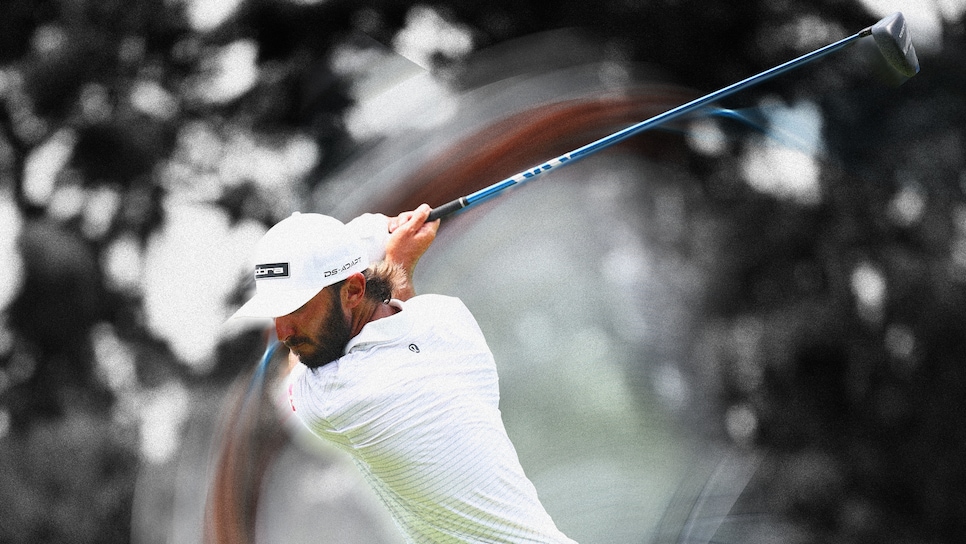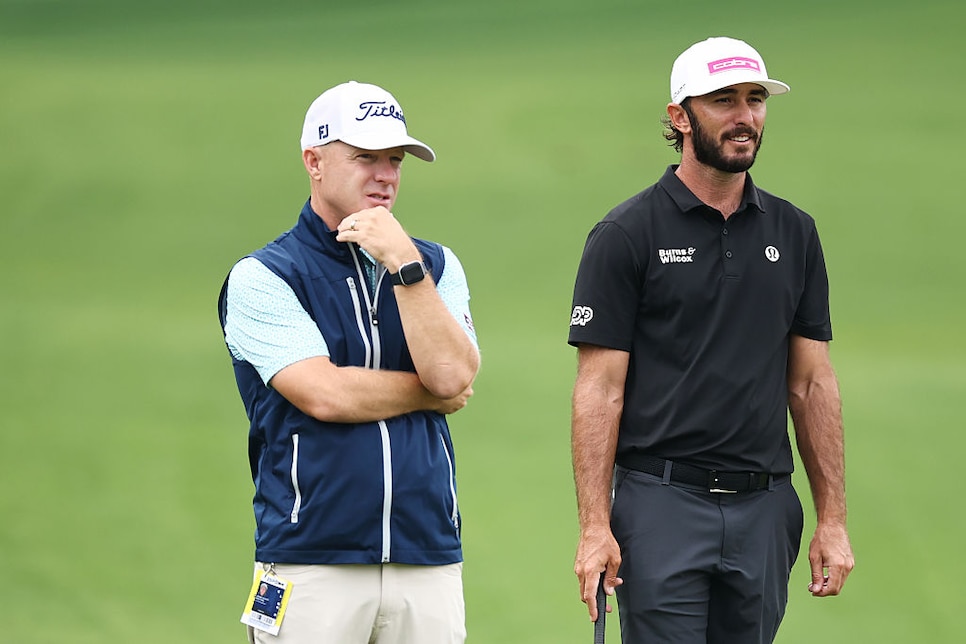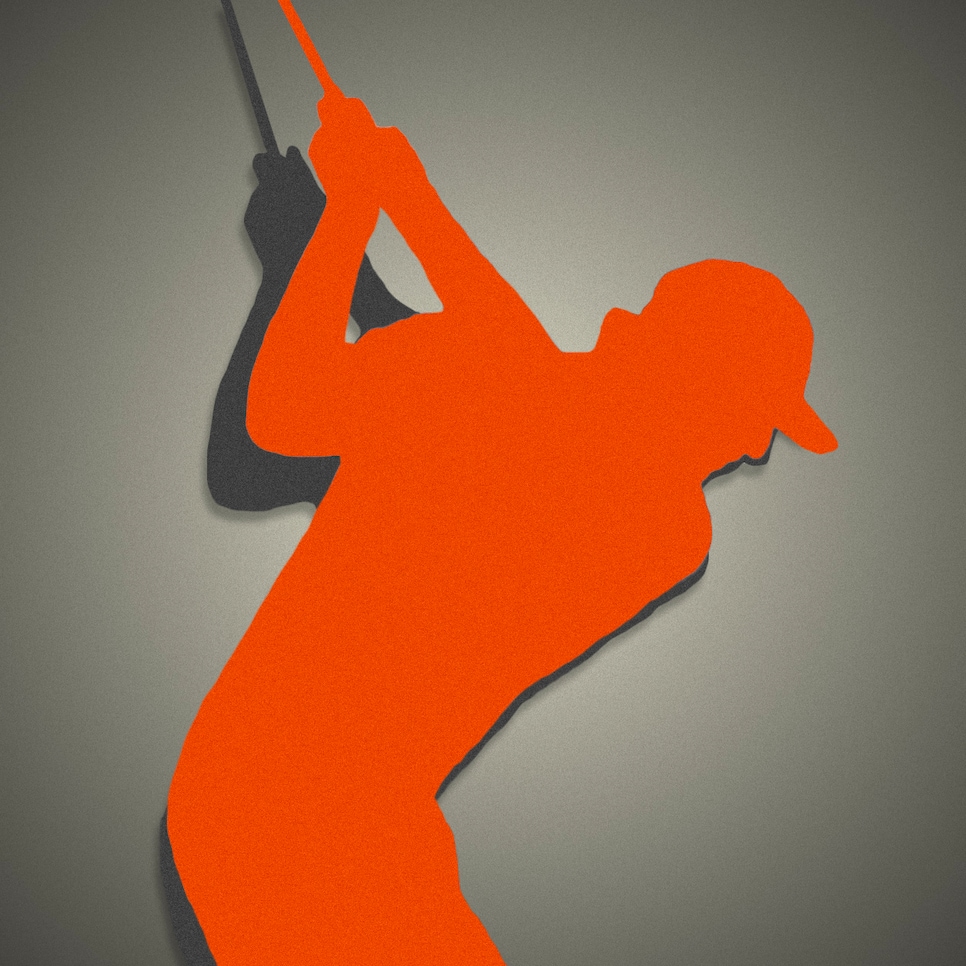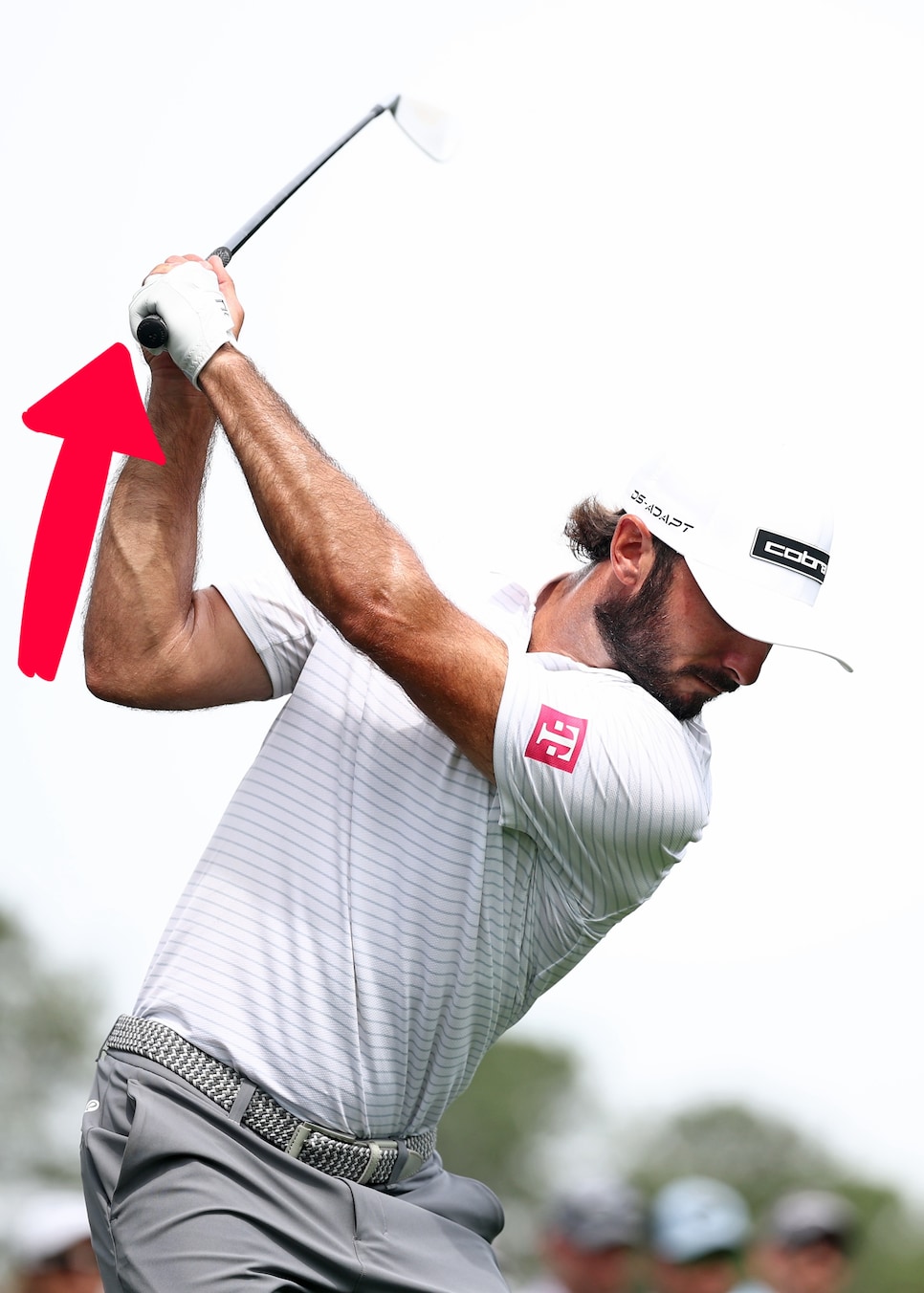CHARLOTTE — There’s no bigger red flag than when a pitcher starts losing his fastball.
In golf, we measure that by ball speed. And the signs for Max Homa in recent years haven’t been good.
Homa ended the 2022 season with an average ball speed of more than 178 mph—faster than 84 percent of the PGA Tour. It dipped the following year, then again the next.
Then, this season, it fell through the floor.
Homa’s ball speed hit a season average of 173 mph pre-Masters, cruising lower than tour average for the first time in his career. It’d be fair to consider something like this a kind of career death knell. Players can hang on for a little bit at the top level when their speed begins abandoning them, but it rarely ends well.
Not for Homa, because for him came a breakthrough.
“It was a situation of, how do we get Max feeling like Max again?” Homa’s coach, Golf Digest Best in State Teacher John Scott Rattan, said. “There were a couple of cues that he went to, and it was like a lightbulb that went off in his head,”

At the heart of it, the issue was a technical one. But as the technical issues persisted, his confidence went with it, which made the technique issues worse yet. The combination sent Max into a kind of downward spiral that Homa is now propelling out of.
When Homa first arrived on tour, his swing tended toward too upright, and created inconsistencies in his downswing due to a relative lack of mobility in his shoulders.
Homa and his then coach Mark Blackburn worked on lowering his arms on the backswing, turning them deeper and more around him on the backswing. This made Homa less reliant on his hands for timing through impact and propelled him to the best golf of his career.
When Homa landed on Rattan’s doorstep, there was a new problem to solve.

Jared C. Tilton
Homa’s arms had now gotten too deep, and too behind him on the backswing. It made Homa’s swing shorter because his body was now acting as a kind of roadblock for his arms. He couldn’t turn them more even if he tried.
“His backswing had gotten really short,” Rattan says. “His right arm got really deep and pinned behind him.”

Homa’s shorter, deeper backswing position in late 2023 (grey) compared with his 2022 swing (orange)
The more speed Homa lost, the worse he played. The worse he played, the less confident he became, so he started swinging even shorter and softer. What started as a kind of mental block was now making his bad habit even worse.
Rattan says he and Homa have been working on getting Homa’s arms more in front of his body on the backswing, which helps his arms get higher up toward the sky.

Emilee Chinn
“We wanted to get his right arm to work better on the backswing,” Rattan says. “Get his hand path more in front of his body, and the club more up.”
With his arms lifting more up instead of around on the backswing, Homa can begin turning aggressively through the ball on the downswing knowing his arms will land in the slot more in front of his body, and less trapped behind.
The technique slowly got better, but the breakthrough came with a cue that helped him do it: The feeling that Homa’s right arm was more under the club, and propping it up. With Homa no longer stalling out, and a new feel that helps him put it into action, he’s beginning to release his newfound speed.

JARED C. TILTON
“I’ve been stuck in the golf swing, so I haven’t been able to let it go. It was unintentional,” Homa says. “When I swing bad, I stall out and jump. When I’m swinging well it means I’m able to keep turning.”
Homa clocked his highest recorded ball speed of the season at the Truist Championship last week (185 mph) and a more than 181 mph average for the week—his highest average ball speed for an event in more than two years.
“All of a sudden, a lot of things clicked. I didn’t feel like I was fighting anything. So I think that’s where the speed kind of jumped,” Homa says. “You get a little confidence to start swinging harder.”
Homa’s new caddie, Bill Harke, noticed the jump, too.
“He knows he’s got the club in the slot, so he can swing as hard as he wants,” he says. “He’s swinging great. He’s swinging confidently. When these guys are doing that, it’s all point and shoot; smash it.”
The trend is continuing this week, with a 182 mph ball speed average and 117 mph clubhead speed average during Friday’s second round, six and five miles per hour faster, respectively, than his season averages.
Max Homa has been cooking off the tee, speed-wise.
2025 averages:
CHS: 117 mph
Ball Speed: 176 mphToday:
CHS: 122.8 mph
Ball Speed: 182 mphSaid it’s a combination of feeling less inhibited (“I can turn more…not stall out”), more confident and some equipment tweaks
— LKD (@LukeKerrDineen) May 16, 2025
There’s no reason to think this won’t last.
At 34, Homa is firmly in his physical prime. His technique is back where he wants it, a new feel is helping him translate it to the course, and his confidence is fueling it along the way.
Technique; Feel; Confidence. They’re the three essential elements of golf, and there’s no better time for that holy trinity to come together for Max Homa than at the PGA Championship.

Jared C. Tilton
This article was originally published on golfdigest.com




